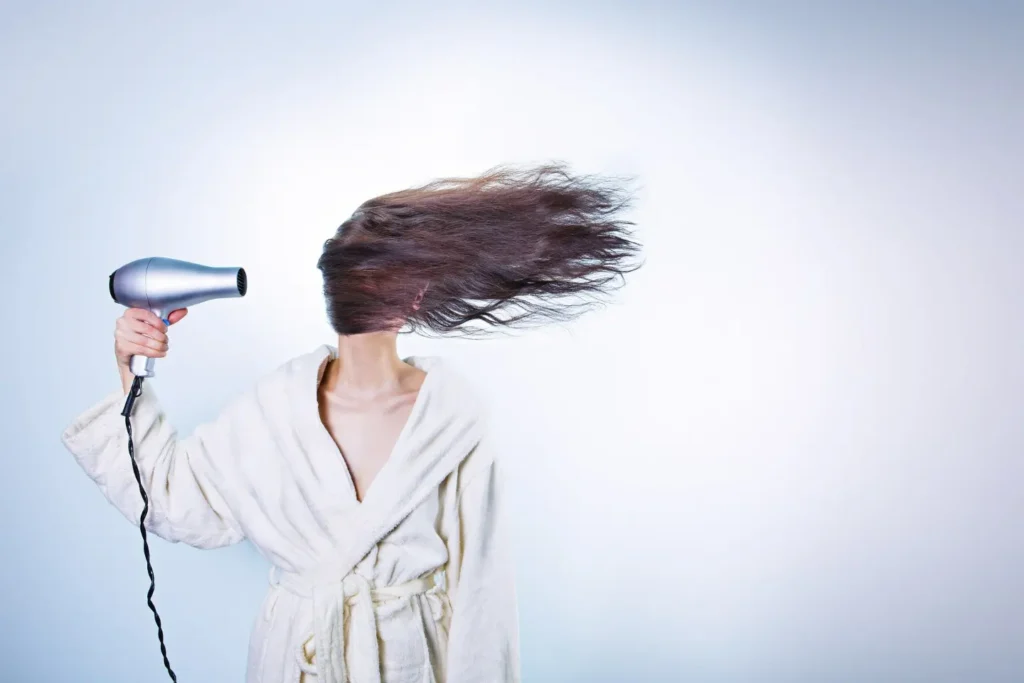While many people color their hair as a means of self-expression or just to hide grays, questions surrounding the safety of hair colorants remain unresolved. Are we merely falling for common hair coloring myths beliefs, or is your hair dye dangerous? This post will go over the background of hair color and typical worries and offer evidence-based responses to the question: Is hair color truly harmful for you?
Coal-tar dyes were employed to create hair colors when they initially debuted in the early 20th century, which set some people off from allergies. Since most modern hair colors have components similar to those of their older equivalents, the FDA still classifies most of them as coal-tar dyes, notwithstanding developments in formulations. Although most hair colors today come from petroleum, which makes them generally less harsh than their predecessors from years past, issues still exist.
For thousands of years, people have been dying their hair with henna and other natural colors from ancient civilizations, including the Egyptians. Though they are significantly more sophisticated today, current hair colors still cause questions. New York-based dermatologist.
“Many people are concerned about the effects of hair dye safety on their health, but in most cases, the risks are minimal when dyes are used correctly”
To help you make wise selections regarding your hair, we will dispel these misconceptions, clarify how hair color works, and offer an analysis of the safety of hair dye safety in this post.
How Hair Dye Works
To understand the fundamental chemistry of hair coloring myths, one may appreciate the worries related to hair dye.
Chemical compounds included in hair dye enter the hair shaft to change its color. An oxidizing chemical like hydrogen peroxide is combined with ammonia in permanent colors to open the hair cuticle and enable the dye molecules to interact with the hair. This procedure permanently alters the color of the hair; so, regrowth or re-coloring is necessary to revert it.
Permanent dyes offer long-lasting color, although their powerful chemical nature might cause greater damage.
Last for 6–12 washes; semi-permanent dyes don’t penetrate as deeply and are hence less harmful.
Sit on the surface of the hair and wash off following a few shampoos using temporary dyes. Of all the invasions, they are the least intrusive.
Common Myths About Hair Dye
- All Hair Dyes Are Toxic
Though this is mainly a myth, lots of people think all hair colors are harmful. While early colors included strong chemicals, modern hair colors are subject to reformulation and laws. Though similar compounds are occasionally employed in place of those earlier compounds, cosmetic producers no longer utilize compounds shown to cause cancer in animals. Health specialists claim that the substitute components are still under research to grasp their long-term consequences completely.
- Hair Dye Causes Cancer
Whether hair color raises cancer risk has been up for some argument. While some research has connected hair colors to an increased risk of several cancers, others have not established any such link. Research by the National Cancer Institute finds no clear proof that sporadic use of hair color raises the risk of most malignancies. The studies do show, nonetheless, that regular or continuous use—especially in hairdressers—may cause a somewhat greater risk.
As a preventative step, health professionals—including the FDA—recommend cutting back on the frequency of hair dye use.
Dermatologist Dr. Elizabeth Kream of Los Angeles suggests,
“If you’re worried about possible risks, consider spacing out your hair dyeing sessions or waiting until you start to go gray.”
- Dyeing Your Hair Will Make It Fall Out
One often expressed worry is that dying your hair would cause it to fall out. Although dying does not directly cause hair loss, the chemicals in permanent dyes can weaken the hair shaft and cause breaking. Sometimes, one mistakes this breakage for hair loss.
Dr. Green counsels,
“As long as you’re not overprocessing your hair and are following the proper aftercare routine, dyeing shouldn’t cause significant hair loss.”
- Natural Dyes Are Always Safer
Though this is not always true, it is easy to think that natural dyes such as henna or plant-based ones are always safer. Though their efficacy varies greatly, natural dyes might nevertheless produce allergic responses or scalp irritation. Like synthetic dyes, they should be handled carefully—particularly if you have sensitive skin.
- Frequent Dyeing Leads to Irreversible Damage
While it’s not necessarily permanent, regular coloring can cause hair damage. Strong chemical overprocessing of hair could cause it to become dry, brittle, and split end-prone. Still, you may recover much of the health of your hair with the correct products and care. To keep your hair strong and shiny, limit the frequency of dying it and use color-safe shampoos and conditioners.
Scientific Evidence on Hair Dye
Research on hair dye safety has been quite comprehensive. A comprehensive investigation by the National Institutes of Health carried out in 2020 revealed no clear correlation between personal hair dye use and a higher risk of most malignancies. Health experts advise, meanwhile, that using hair colors in moderation is still smart.
The continuous controversy stems from hair colors, unlike other cosmetic color additives, not undergoing FDA pre-market safety testing. Though there are less strict rules for hair dye safety ingredients than for other items, cosmetic producers willingly follow the requirements.
Potential Risks of Hair Dyeing
Although hair coloring myths are regarded as generally safe, specific possible hazards exist:
Allergic reactions: Some people may get an allergy to components such as para-phenylenediamine (PPD), which might cause skin irritability, rashes, or more serious responses.
Scalp irritation: Particularly if left on too long, strong chemicals can aggravate the scalp.
Hair damage: Over-processing permanent colors can compromise the hair structure, causing dryness, split ends, and breaking.
Potential links to health conditions: Regular hair dye use has long-term repercussions that are under continuous research; some studies even look at connections to disorders like non-Hodgkin’s lymphoma. Conclusive proof is missing, though.
Precautions When Using Hair Dye
Health professionals advise following these guidelines to lower the hazards related to hair color:
Leave the color on your scalp for a little more than what is absolutely required.
After applying a hair color, rinse your head completely with water.
Apply color using gloves to avoid aggravating skin conditions.
Thoroughly follow all the directions in the hair coloring myths packaging.
Even if you have used the same product before, do a patch test before every usage.
Never mix many hair color products.
Ingredients to Be Aware Of
Although many hair colors are harmless, several components could cause problems:
Though it can be harsh on hair and the scalp, ammonia opens the hair cuticle, enabling color to penetrate.
A common cause of allergic reactions, PPD is present in many permanent hair colors.
Resorcinol is a chemical used in hair color that could aggravate skin conditions.
Search for more modern formulations with milder on-the-hair and scalp substitutes like ethanolamine rather than ammonia.
Special Considerations
Pregnancy: To reduce possible dangers, several experts—including the American College of Obstetricians and Gynecologists (ACOG)—advise pregnant women to avoid hair colorants in the first trimester.
Age restrictions: Since younger scalps could be more sensitive to chemicals, most hair color products have a minimum age requirement—usually 16.
Natural Alternatives to Chemical Dyes
Alternatives to synthetic colors are natural ones such as henna, indigo, and chamomile. They have certain difficulties even if they might be milder on the hair. For instance, henning gives few color choices and can be difficult to remove or change once applied.
Professional vs. At-Home Dyeing
Although at-home dying is more reasonably priced and handy, it can also result in overprocessing or uneven color. Professional colorists can apply the dye more precisely and match it to your hair type.
Celebrity colorist Marie Robinson says.
“If you’re unsure about dyeing your hair at home, it’s always a good idea to seek out a professional for your first time, especially if you’re looking for a significant color change,”
Hair Health and Dyeing
If you dye your hair often, maintaining its health becomes absolutely vital. Choose shampoos and conditioners meant for colored hair to help prevent dryness and breakage; avoid too strong heat styling and use hydrating treatments.
The Future of Hair Dye
Demand for safer, more natural hair color products is rising. Companies are spending on research to produce less harmful and more ecologically friendly colors. Leading the way are novel ideas such as vegan and ammonia-free colors.
Expert Opinions
Although hair color comes with some hazards, most professionals concur that when used properly, it is harmless.
Dr. Green advises,
“Be aware of how often you color your hair and use products that fit your hair type and texture.”
Making Informed Decisions
Dying your hair ultimately boils down to your risk tolerance. Think about your health background, frequency of hair dying, and preferred natural or synthetic product type. Following safe dying techniques can help you to look fresh without sacrificing the condition of your hair.
As hair dye safety technology develops, consumers have more choices, including safer and more natural substitutes. Knowing the science behind hair color can enable you to make wise decisions for your hair, whether you choose salon treatments or do-it-yourself projects.


